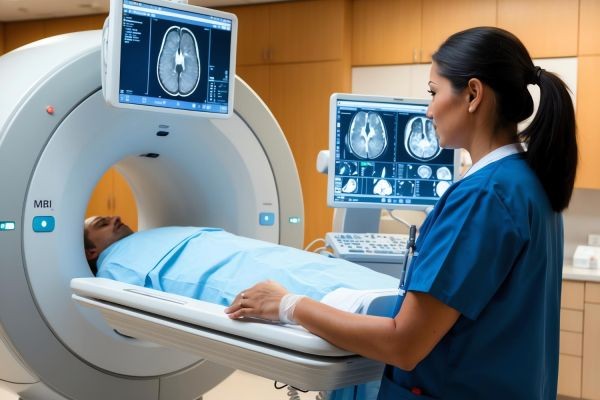Have you ever considered how critical high-quality imaging is in the medical field? From diagnostics to treatment monitoring, the clarity and detail captured in medical images can significantly impact patient outcomes. However, the cost of advanced imaging equipment can be a significant barrier for many healthcare providers. What if there was a way to achieve remarkable imaging results without breaking the bank? Enter the USB 2.0 camera—a budget-friendly solution that is revolutionizing the landscape of medical imaging.
Understanding USB 2.0 Cameras
USB 2.0 cameras are versatile imaging devices that connect directly to computers via USB ports. Though often overshadowed by their more advanced counterparts, such as USB 3.0 cameras, USB 2.0 cameras provide essential functionalities at a fraction of the cost. They are equipped with decent resolution capabilities, typically ranging from 640x480 to 1920x1080 pixels, making them suitable for various medical imaging applications.
Key Features of USB 2.0 Cameras
-
Affordability: The primary advantage of USB 2.0 cameras is their cost-effectiveness. With lower price points, healthcare facilities can invest in multiple units without significant financial strain.
-
Ease of Use: USB 2.0 cameras are plug-and-play devices that require minimal setup. Medical professionals can easily integrate them into existing systems, ensuring a smooth transition without the need for extensive training.
-
Compatibility: Most USB 2.0 cameras are compatible with a wide range of software, making them adaptable to various imaging applications—from dermatology to telemedicine.
-
Portability: Their compact size allows for easy transport and setup, which is particularly beneficial for mobile health units and smaller clinics.
Addressing Common Pain Points in Medical Imaging
The high costs of advanced imaging technology can deter many healthcare providers from acquiring the tools they need. Let’s delve into some common pain points faced by medical professionals and how USB 2.0 cameras can provide effective solutions.
1. Budget Constraints
For many healthcare facilities, especially small practices or those in rural areas, budget constraints are a significant barrier to acquiring high-end imaging equipment. Advanced systems often come with hefty price tags, making it challenging to maintain a quality level of service.
Solution: USB 2.0 cameras present an affordable alternative that enables practitioners to capture high-quality images for examinations, patient records, and educational purposes. By investing in these cameras, clinics can enhance their diagnostic capabilities without overwhelming financial commitments.
2. Limited Resources for Training and Maintenance
Many advanced imaging systems require extensive training for staff to operate effectively. This not only adds to the initial investment costs but also increases downtime as staff adapt to new systems. Moreover, complex devices often necessitate specialized maintenance, which can be a drain on resources.
Solution: USB 2.0 cameras are typically user-friendly and straightforward to operate. Their simplicity means that existing staff can quickly adapt to using them, minimizing training time and associated costs. Furthermore, maintenance is generally uncomplicated, reducing the need for specialized technicians.
3. Access to Quality Imaging in Remote Areas
In remote or underserved regions, access to advanced medical imaging equipment is often limited. Patients in these areas may experience delays in diagnosis and treatment due to the unavailability of reliable imaging solutions.
Solution: With their portability and ease of use, USB 2.0 cameras can be deployed in mobile health units and clinics, providing essential imaging services where they are most needed. These cameras can facilitate telemedicine, enabling healthcare providers to conduct remote consultations and share images with specialists for timely assessments.
Applications of USB 2.0 Cameras in Medical Imaging
The versatility of USB 2.0 cameras makes them suitable for various applications across the medical field. Here are some notable uses:
1. Dermatology
In dermatology, accurate imaging is crucial for diagnosing skin conditions, tracking changes in lesions, and documenting patient progress. USB 2.0 cameras can capture detailed images of skin abnormalities, which can be easily integrated into patient records for ongoing monitoring.
2. Telemedicine
With the growing demand for remote healthcare services, USB 2.0 cameras enable healthcare providers to conduct virtual consultations effectively. By capturing high-quality images, practitioners can assess conditions and make informed decisions without needing the patient to visit the clinic.
3. Patient Education
Educating patients about their conditions is vital for compliance and treatment adherence. USB 2.0 cameras can be used to capture images that aid in explaining diagnoses and treatment plans, fostering a better understanding between healthcare providers and patients.
4. Surgical Documentation
Surgeons can utilize USB 2.0 cameras for intraoperative documentation, capturing images that can be shared with peers for educational purposes or included in patient records. This enhances transparency and facilitates knowledge sharing among medical professionals.
Benefits Beyond Cost Savings
While affordability is a significant advantage of USB 2.0 cameras, their value extends beyond just price. Here are additional benefits that healthcare providers can leverage:
1. Improved Patient Outcomes
With reliable imaging solutions, practitioners can enhance their diagnostic accuracy, leading to better patient outcomes. Clear images allow for more informed decision-making, ensuring that patients receive appropriate treatments promptly.
2. Increased Efficiency
The ease of use and compatibility of USB 2.0 cameras streamline workflow processes in healthcare settings. With minimal setup and straightforward operation, medical professionals can focus on patient care rather than technical challenges.
3. Scalability
As healthcare facilities grow, they can easily scale their imaging capabilities by purchasing additional USB 2.0 cameras. This scalability ensures that as patient demands increase, facilities can maintain their imaging quality without significant additional investment.
Finding the Right USB 2.0 Camera for Your Practice
When selecting a USB 2.0 camera for medical imaging, consider the following factors:
- Resolution: Choose a camera that meets your imaging requirements, balancing cost and image quality.
- Compatibility: Ensure the camera is compatible with your existing systems and software.
- Support and Warranty: Opt for manufacturers that provide robust customer support and warranty options to protect your investment.
Empowering Healthcare Providers with Affordable Imaging Solutions
In a world where the demand for high-quality medical imaging continues to grow, USB 2.0 cameras offer an affordable solution without compromising on quality. By addressing common pain points such as budget constraints, training limitations, and accessibility challenges, these cameras empower healthcare providers to deliver better patient care.
With their versatility, ease of use, and cost-effectiveness, USB 2.0 cameras are not just an alternative; they are a valuable asset in the medical imaging landscape. As healthcare facilities strive to enhance their services and patient outcomes, embracing the power of affordable solutions like USB 2.0 cameras will be a strategic move toward a brighter future in medical imaging.
Unlocking the Potential of Medical Imaging
USB 2.0 cameras are redefining how healthcare providers approach imaging solutions. By understanding their value and integrating them into everyday practice, facilities can improve their diagnostic capabilities, enhance patient care, and ultimately transform the patient experience—all without the burdensome costs typically associated with advanced imaging technology. As the healthcare industry continues to evolve, leveraging these accessible tools will be essential for success.


